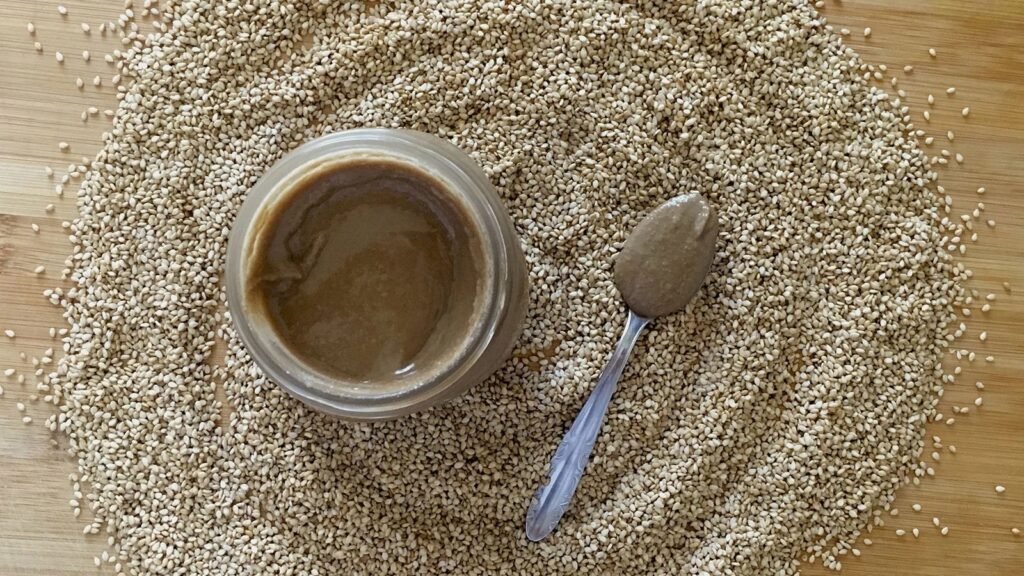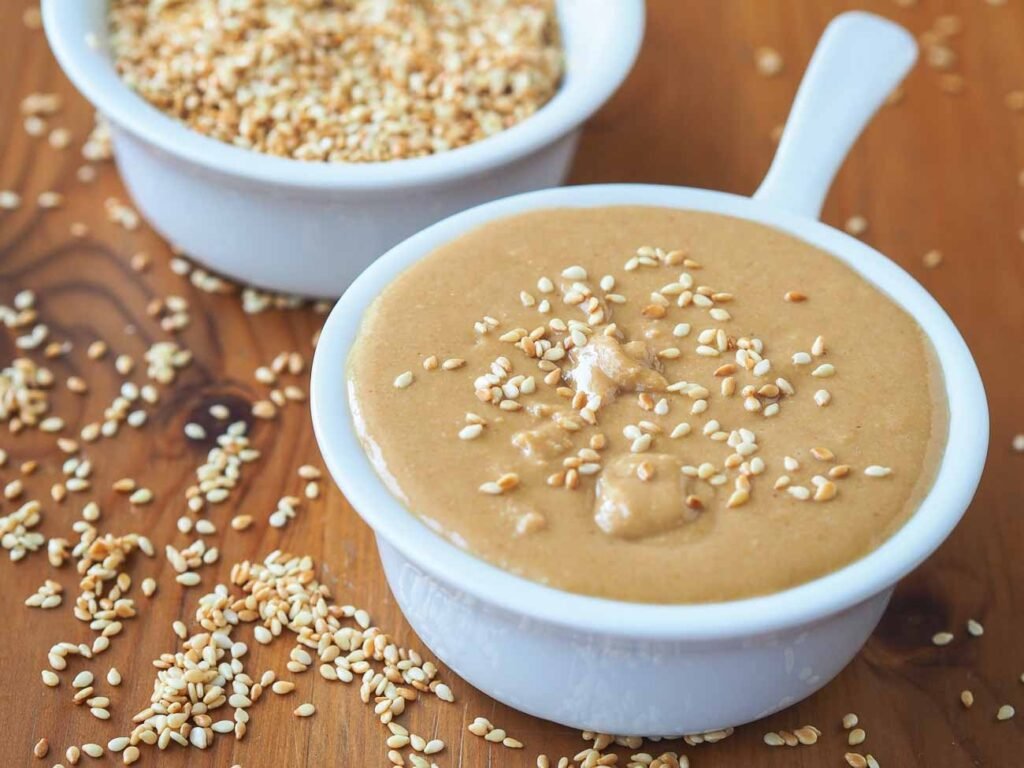In September 2025, a major recall of Durra brand tahini affected supermarket shelves in New Zealand due to possible salmonella contamination. Food safety authorities urged consumers not to eat the affected product and to return any purchases for a refund, highlighting the complexities and risks associated with global sesame seed sourcing and tahini production. Although no associated illnesses were reported, this incident highlights the importance of rigorous quality control and transparency in the rapidly expanding tahini industry. Producers are increasingly adopting advanced safety protocols and investing in consumer education as a precaution, hoping to maintain trust in this popular staple.
Tahini is a creamy, nutrient-rich paste made from ground sesame seeds, celebrated for its distinctive nutty flavour and broad culinary versatility across global cuisines. This comprehensive article covers every facet of tahini, from its origins and production life cycle to breed specifics, nutritional value, controversies, recent news, and answers to frequently asked questions. It is tailored for search engine optimisation to ensure easy discovery and engagement by readers seeking in-depth information on this unique food staple.
Origin and History
Tahini traces its earliest known use to ancient Mesopotamia and Egypt, where sesame seeds featured in culinary and medicinal contexts. Evidence from the Ebers Papyrus suggests both the name and plant were integral to early diets, especially in the form of sweetened paste or halva. Its production involved roasting, peeling, and grinding sesame seeds, a method likely developed in prominent trade cities like Ur in ancient Mesopotamia, specifically in ancient Iraq. Over millennia, tahini evolved into a cornerstone of Middle Eastern and Mediterranean cuisine, appearing in classic dishes such as hummus, baba ganoush, and halva, and spreading worldwide due to globalisation and the increasing popularity of plant-based foods.
Life Cycle from Seed to Paste
The tahini life cycle begins with the cultivation of sesame plants, a drought-resistant crop grown in regions across Asia, Africa, and the Middle East. Seeds are harvested, dried, cleaned, and then roasted (or left raw for some varieties) before being hulled or left unhulled. Hulled seeds yield a smoother, lighter taste, while unhulled ones result in a more bitter, nutritious paste. Grinding the seeds, often with modern machinery, produces tahini’s signature creamy texture. From farm to finished jar, every step impacts the nutritional profile, shelf life, and flavour, making careful sourcing and quality control essential for premium products.
Breeds and Seed Origin
Not all tahini is created equal. The breed of sesame seed affects both nutrition and taste. White Humera sesame seeds from Ethiopia, for example, are prized for their rich oil content, nutty flavour, and higher mineral concentration. Other breeds, ranging from brown to black, red, and pale grey, offer varied nutritional benefits and textures. Regions such as India, Sudan, and Turkey also supply unique sesame varieties, each contributing distinctive characteristics to their local tahini blends.
Nutritional Facts and Health Benefits
Tahini is low in calories but notably high in protein, healthy fats, fibre, vitamins, and minerals. A single tablespoon (15g) typically contains:
- 89 calories
- 3g protein
- 3g carbs
- 8g fat (primarily unsaturated)
- 2g fibre
- Trace minerals like copper, selenium, phosphorus, iron, zinc, and calcium
Tahini delivers robust health perks: copper supports iron absorption and blood pressure regulation, selenium acts as an antioxidant boosting immune health, and sesamol (a sesame compound) offers anti-inflammatory and anti-ageing benefits. Its phytosterols may help lower cholesterol, and the rich array of B vitamins contributes to energy and metabolism.
Culinary Applications
Tahini stars in classic dishes such as:
- Hummus (chickpea dip)
- Baba ganoush (eggplant dip)
- Halva (sesame sweet)
- Salad dressings
- Sauces for shawarma, falafel
- Dessert toppings and baked goods
- Smoothies, soups, energy drinks
Its creamy consistency and subtle earthiness make it a versatile base for recipes or a healthy fat alternative for plant-based, gluten-free, and vegan lifestyles.

Shelf Life and Storage
Unopened tahini can last up to two years in a cool, dry pantry. Once opened, it remains fresh for six months to one year when stored in an airtight container; refrigeration is optional but helps prevent separation and spoilage. Homemade tahini, lacking stabilisers and preservatives, should be consumed within weeks. Spoilage signs include dryness, colour change, rancid odour, and unpleasant texture. Moisture is the chief enemy, as it fosters the growth of bacteria and promotes spoilage.
Global Market and Consumption Trends
The tahini market is booming. Valued at $2.15 billion in 2024, it is projected to reach nearly $3.89 billion by 2034, enjoying a CAGR of 6.1%. The surge is attributed to the worldwide appeal of Mediterranean cuisine, the rise of veganism, and increasing awareness of tahini’s health benefits. Large-scale manufacturers and local brands alike harness the versatility of tahini to produce a diverse range of products, including sauces, snacks, spreads, and desserts.
Controversies and Recent News
Tahini has occasionally found itself at the crossroads of social, cultural, and safety concerns:
- In 2020, a prominent tahini producer faced backlash and boycotts over donations to LGBTQ rights organisations, underscoring the complexities of business and community politics, especially in the Middle East.
- Food safety issues have arisen recently. In September 2025, the Durra brand tahini was recalled in New Zealand due to possible Salmonella contamination, a risk heightened by factors such as water quality, seed handling, and hygiene standards.
- Some brands have invested in major media campaigns to boost consumer trust and market share, especially following safety recalls or controversies, further highlighting the global attention on tahini’s production, marketing, and safe consumption.
FAQs About Tahini
What is tahini made of?
Tahini is made by grinding hulled or unhulled sesame seeds into a smooth, creamy paste, sometimes with a touch of salt or oil added.
How long does tahini last after it is opened?
Tahini typically lasts 6-12 months after opening when stored airtight and away from moisture, though homemade varieties spoil more quickly.
Is tahini healthy?
Yes. Tahini is a rich source of protein, healthy fats, fibre, copper, calcium, selenium, and phosphorus, offering antioxidant and anti-inflammatory benefits.
Are there risks or allergies associated?
Tahini may trigger allergies in people sensitive to sesame seeds. Some batches have recently faced recall due to contamination concerns, such as Salmonella. Always check for safety alerts before consuming.
How is tahini used in cooking?
Tahini is blended into dips (hummus, baba ganoush), dressings, sauces, desserts, and beverages and can be used as a healthful alternative to butter or cream.
What breeds of sesame are used for tahini?
Premium tahini often uses White Humera seeds (Ethiopia) for their rich flavour and nutritional value, while other varieties originate from India, Sudan, and Turkey.
What does spoiled tahini look or smell like?
Spoiled tahini may become dry, greyish, and musty, losing its creamy texture and fresh aroma. Always use visual and olfactory cues to check freshness.
How does tahini impact the environment?
Production can impact water use, soil health, and carbon footprint, but modern approaches emphasise sustainable practices and life cycle assessments to reduce negative effects.










